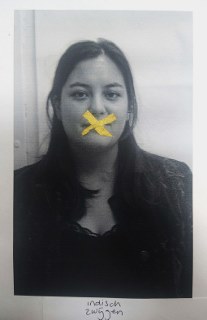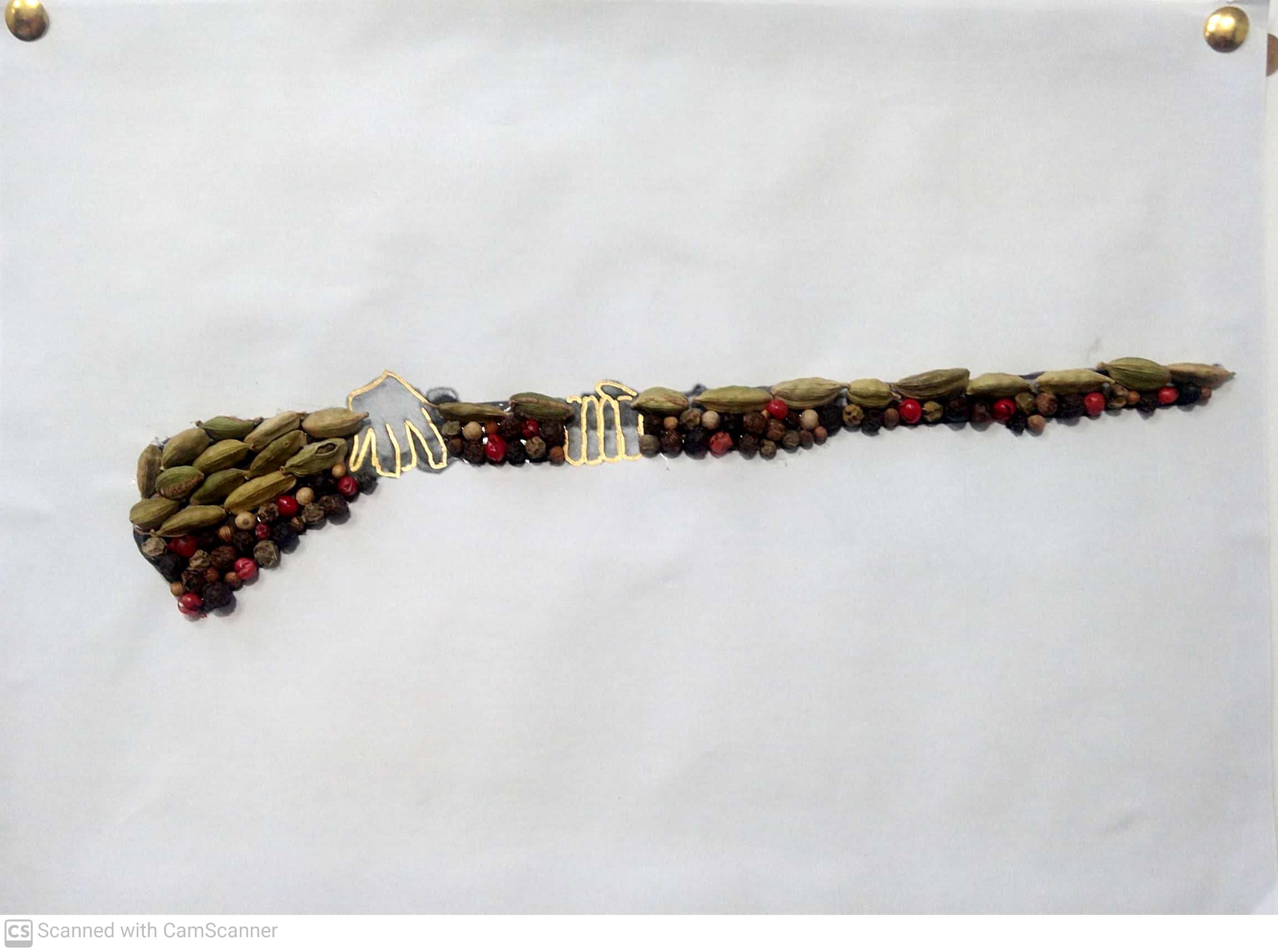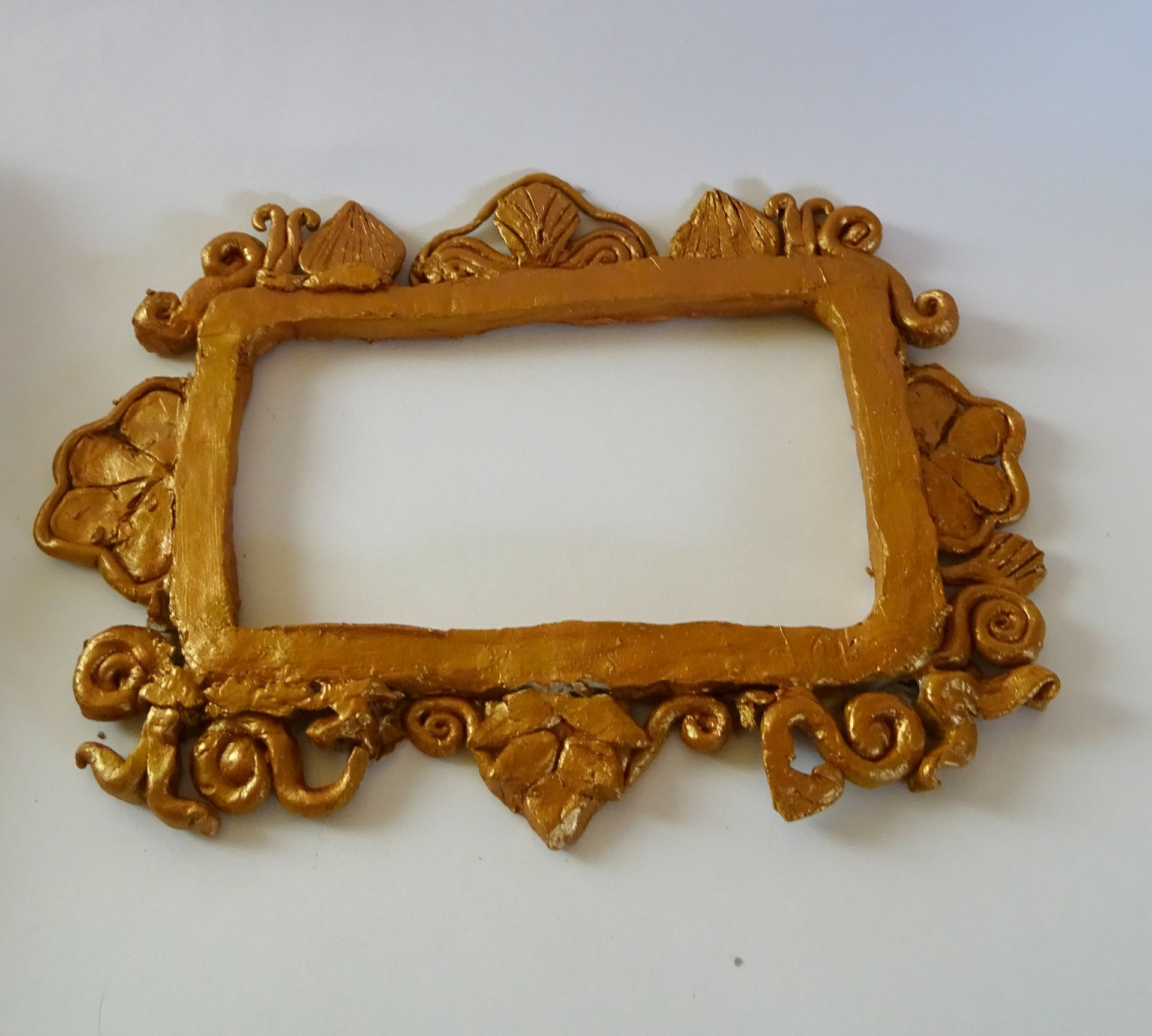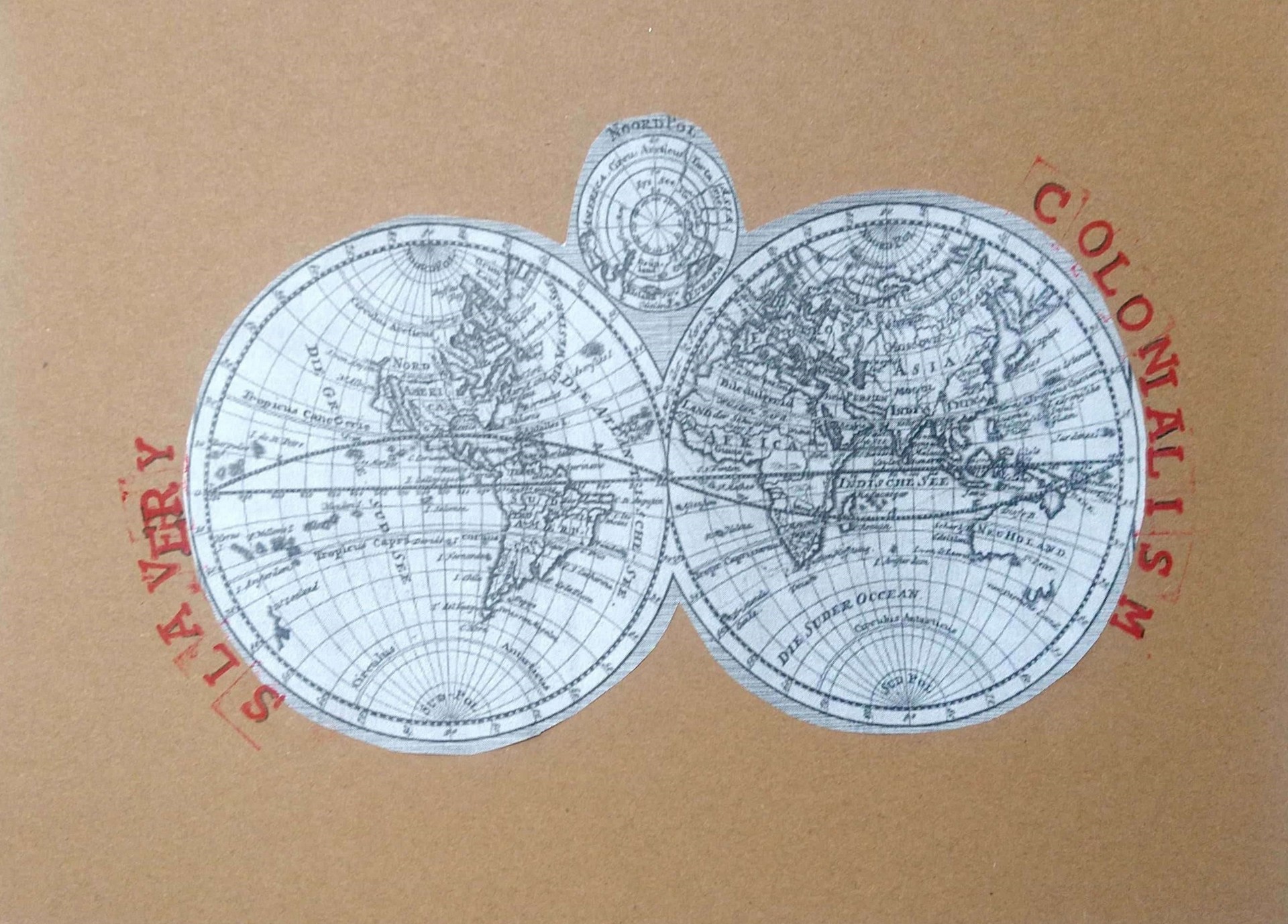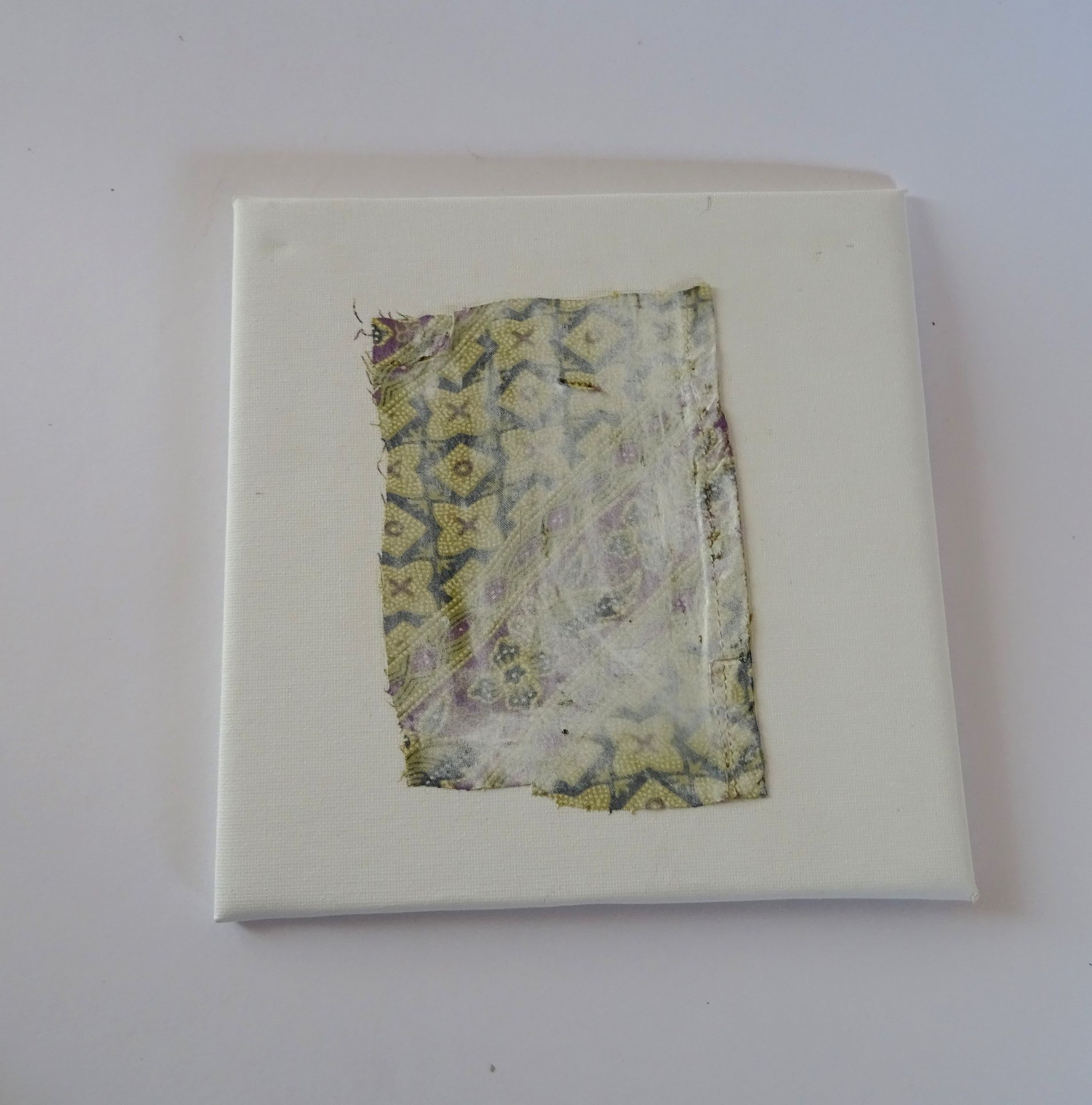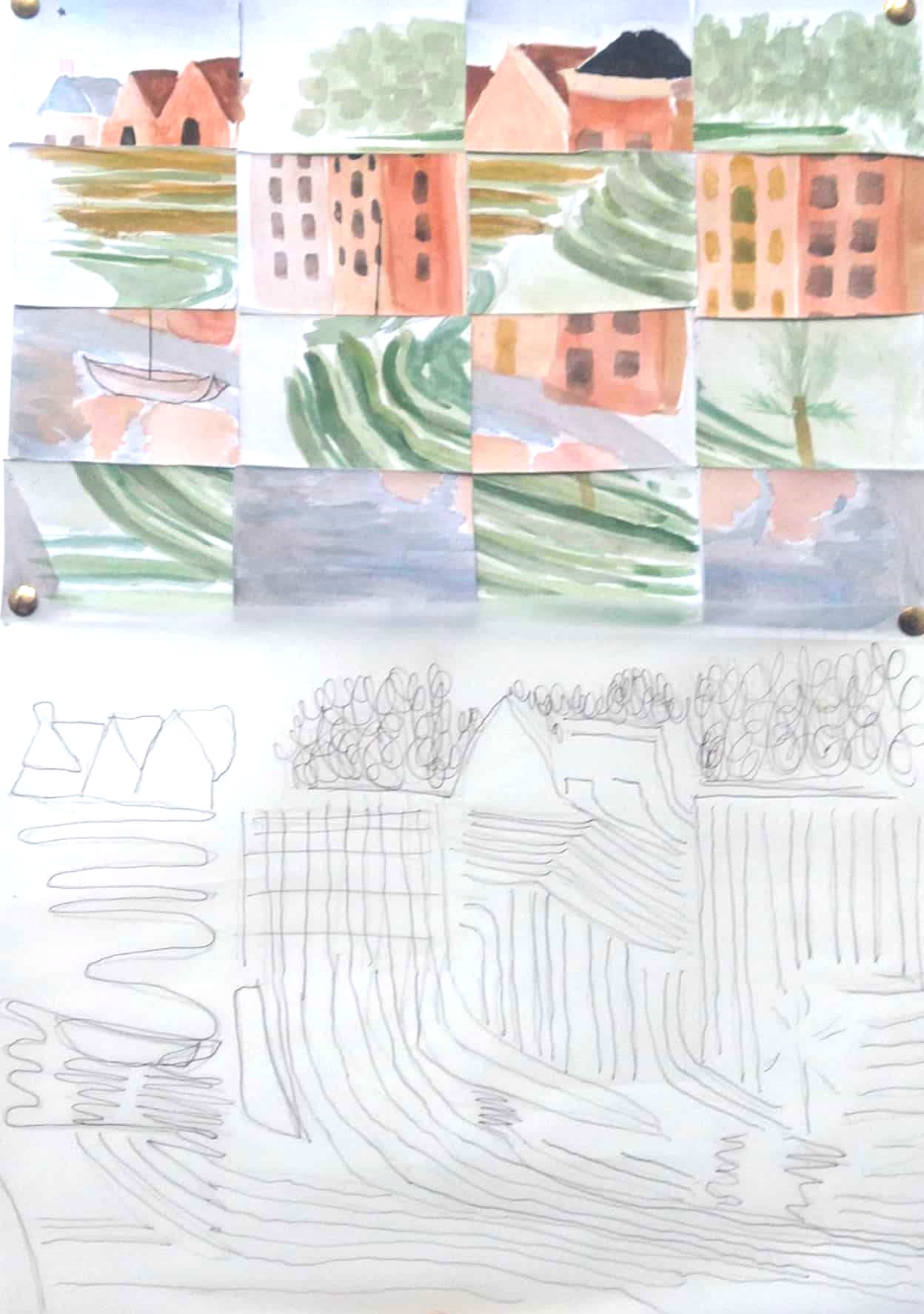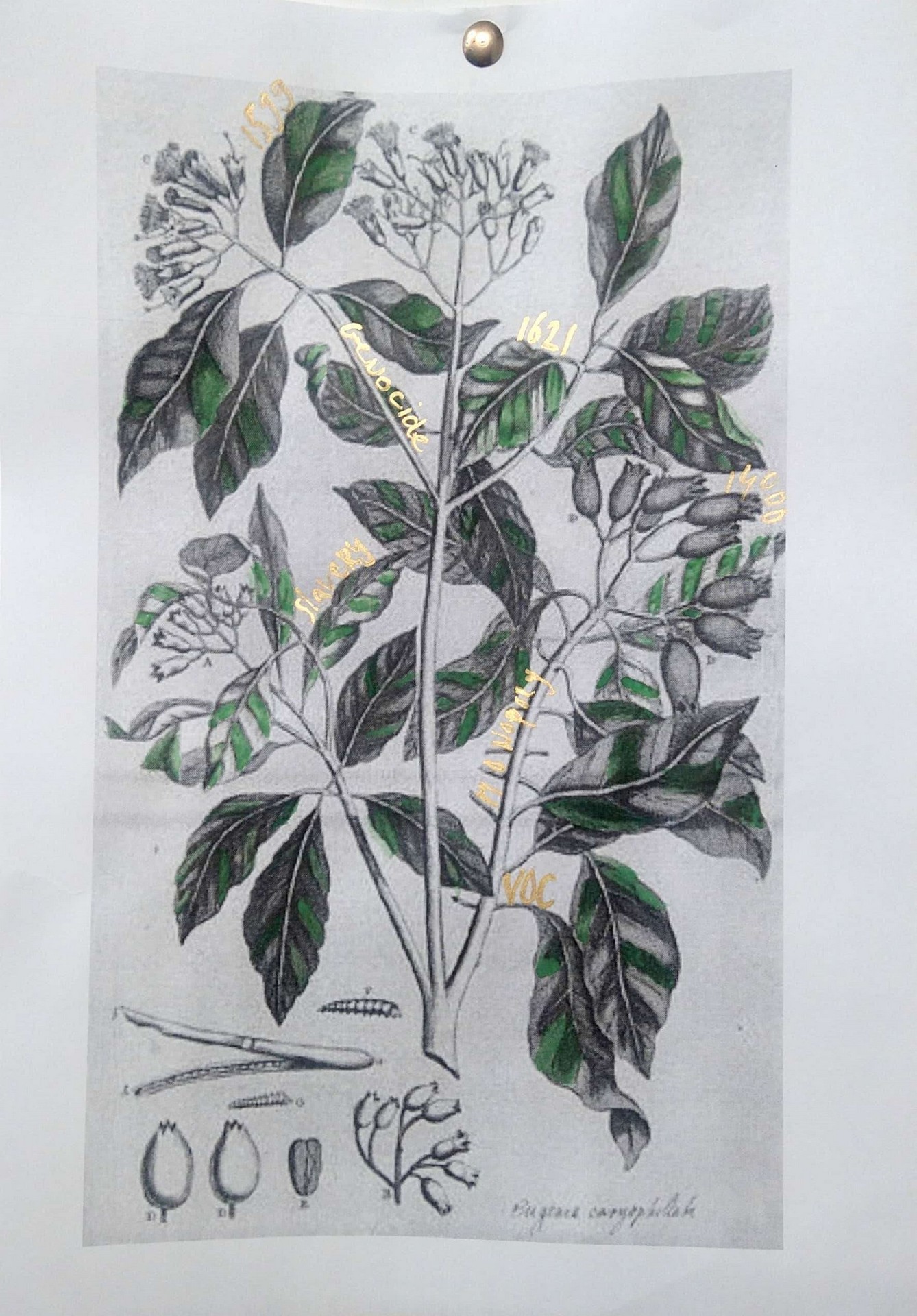
"Spice trade" (2023)
Spice trade
consists of two works. The first is a historic botanical print of a nutmeg
plant. In between the leaves, we see words written in gold that reflect the
violence that were committed in the name of the spice trade. Whilst colonialism
is an incredibly violent system, in Dutch discourse, it is often reduced to
mere trade relations. Adding to this, is the praise of all the amazing spices
that the Netherlands gained access to through this trade. This hides the
violence that is entrenched in this practice.
Firstly, to gain a monopoly on nutmeg, Dutch colonisers came to the islands
Banda in 1599 which at the time was the only place in the world where nutmeg
grew. To gain exclusive access to the spice, in 1621 the Dutch committed
genocide against the Bandanese inhabitants (Manuhutu, 2022). The Northern
Maritime Museum estimates 14.000 Bandanese inhabitants were murdered, forced to
flee, or enslaved to work at the nutmeg plantations (Northern Maritime Museum,
2023).
This piece aims to disrupt the innocence around the spice trade narrative.
While at first it seems like an innocent painting, looking at the text in it,
highlights the violence that is hidden behind the leaves. Whilst the botanical
piece might hide the harm between the leaves, the second part extracts the harm
and places it on a black canvas – now the words are highlighted and cannot be
ignored anymore.
The other
set of works further disrupts this innocent spice trade myth. It portrays a
gun, taken from the painting ‘De slachting door de Hollanders op Banda in 1621’
(The slaughter by the Dutch on Banda in 1621) from the Museum of Banda, Rumah
Budaya (Manuhutu, 2022). The painting depicts the brutal genocide committed. By
taking the gun from the painting and decorating it with spices, it
re-emphasises the link between the violence committed and the objective to
monopolise the spice trade. While many of these spices are staples in the
average Dutch kitchen, it is collectively forgotten how access was gained to
them.
As such,
the related piece screams ‘Was it worth it?’ written in spices. It is placed
above a painting of the conquest of Jakarta. This work also emphasises and
reasserts the harm that is perpetrated in the name of the ‘spice trade’.
The pieces
aim to disrupt the colonial amnesia and selective memory about what colonialism
was. Instead, it acknowledges the violence of the system, of which we find the
legacy in our kitchens.
